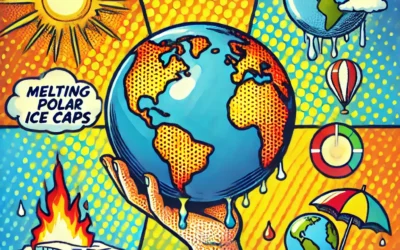Wastewater Treatment: A Key Solution for Climate Change Mitigation and Adaptation
Wastewater treatment is the process of removing contaminants from wastewater, or sewage, before it is discharged into the environment or reused for various purposes. According to the OECD Wastewater Treatment Indicator, the average treatment connection rate in the OECD countries was 81.4% in 2019, with a wide variation across countries. In this article, we will explore how the treatment can help mitigate and adapt to climate change, and what are the challenges and opportunities for improving wastewater treatment.
How Wastewater Treatment Can Help Mitigate Climate Change
Wastewater treatment can help mitigate climate change by reducing greenhouse gas emissions, enhancing carbon sequestration, and promoting renewable energy. Some of the main ways are:
Reducing greenhouse gas emissions: The treatment can reduce greenhouse gas emissions by preventing the release of methane and nitrous oxide from untreated wastewater, which are potent greenhouse gases that contribute to global warming. The treatment can also reduce greenhouse gas emissions by improving the efficiency and quality of the water supply and demand, and by reducing the energy use and emissions associated with water extraction, transport, and treatment.
Enhancing carbon sequestration: The treatment can enhance carbon sequestration by capturing and storing carbon dioxide from wastewater, which is a major greenhouse gas that contributes to global warming. The treatment can also enhance carbon sequestration by restoring and creating wetlands, which are natural ecosystems that can absorb and store large amounts of carbon dioxide from the atmosphere and the water.
Promoting renewable energy: The treatment can promote renewable energy by producing and using biogas from wastewater, which is a clean and renewable source of energy that can replace fossil fuels. The treatment can also promote renewable energy by recovering and reusing nutrients and water from wastewater, which can reduce the dependence and consumption of non-renewable resources.
How Wastewater Treatment Can Help Adapt to Climate Change
Wastewater treatment can help adapt to climate change by improving water security, enhancing water quality, and supporting ecosystem services. Some of the main ways are:
Improving water security: The treatment can improve water security by increasing the availability and reliability of water resources, especially in water-scarce and water-stressed regions. The treatment can also improve water security by reducing the vulnerability and exposure of water systems to climate hazards, such as droughts, floods, and storms.
Enhancing water quality: The treatment can enhance water quality by preventing and reducing water pollution, which can have negative impacts on human health and well-being, as well as on aquatic ecosystems and biodiversity. The treatment can also enhance water quality by improving the standards and regulations of water discharge and reuse, and by monitoring and evaluating the performance and impacts of the treatment.
Supporting ecosystem services: The treatment can support ecosystem services by protecting and restoring the natural functions and values of water-related ecosystems, such as rivers, lakes, wetlands, and coastal zones. The treatment can also support ecosystem services by providing and improving the benefits and opportunities of water-related ecosystems, such as food, recreation, tourism, and education.
Challenges and Opportunities for Improving Wastewater Treatment
Wastewater treatment faces several challenges and opportunities for improving its contribution to climate change mitigation and adaptation. Some of the main ones are:
Data and information: The data and information on wastewater generation, treatment, and reuse are often incomplete, inconsistent, and incomparable, making it difficult to measure, monitor, and evaluate the effectiveness and efficiency of the treatment. The data and information are also often inaccessible, incomprehensible, and inapplicable, making it difficult to communicate, consult, and cooperate with the relevant stakeholders and the public.
Policy and regulation: The policy and regulation on the treatment are often inadequate, incompatible, and ineffective, making it difficult to balance, align, and coordinate the environmental, economic, and social objectives and interests. The policy and regulation are also often uncertain, unstable, and unpredictable, making it difficult to plan, implement, and adapt the the treatment to the changing circumstances and conditions.
Technology and innovation: The technology and innovation on wastewater treatment are often constrained, conflicted, and contested, making it difficult to generate, protect, and transfer the green technologies and solutions. The technology and innovation are also often complex, dynamic, and diverse, making it difficult to manage, support, and enhance the green technologies and solutions.
Conclusion
Wastewater treatment is the process of removing contaminants from wastewater, or sewage, before it is discharged into the environment or reused for various purposes. The treatment can help mitigate and adapt to climate change by reducing greenhouse gas emissions, enhancing carbon sequestration, and promoting renewable energy, as well as by improving water security, enhancing water quality, and supporting ecosystem services.
Wastewater treatment faces several challenges and opportunities for improving its contribution to climate change mitigation and adaptation, such as data and information, policy and regulation, and technology and innovation. The treatment is a key solution for climate change mitigation and adaptation, and can contribute to the goals and targets of environmental policy and sustainable development.






